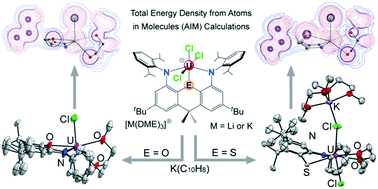Rigid NON- and NSN-ligand complexes of tetravalent and trivalent uranium: comparison of U–OAr2 and U–SAr2 bonding†
Abstract
A rigid NSN-donor proligand,

- This article is part of the themed collection: New Talent: Americas
* Corresponding authors
a
Department of Chemistry, McMaster University, 1280 Main Street West, Hamilton, ON, Canada
E-mail:
emslied@mcmaster.ca
Fax: +(905)-522–2509
Tel: +(905)-525-9140x23307
b McMaster Analytical X-Ray Diffraction Facility, Department of Chemistry, McMaster University, 1280 Main Street West, Hamilton, ON, Canada
A rigid NSN-donor proligand,

 Please wait while we load your content...
Something went wrong. Try again?
Please wait while we load your content...
Something went wrong. Try again?
B. Vidjayacoumar, S. Ilango, M. J. Ray, T. Chu, K. B. Kolpin, N. R. Andreychuk, C. A. Cruz, D. J. H. Emslie, H. A. Jenkins and J. F. Britten, Dalton Trans., 2012, 41, 8175 DOI: 10.1039/C2DT30247K
To request permission to reproduce material from this article, please go to the Copyright Clearance Center request page.
If you are an author contributing to an RSC publication, you do not need to request permission provided correct acknowledgement is given.
If you are the author of this article, you do not need to request permission to reproduce figures and diagrams provided correct acknowledgement is given. If you want to reproduce the whole article in a third-party publication (excluding your thesis/dissertation for which permission is not required) please go to the Copyright Clearance Center request page.
Read more about how to correctly acknowledge RSC content.
 Fetching data from CrossRef.
Fetching data from CrossRef.
This may take some time to load.
Loading related content
